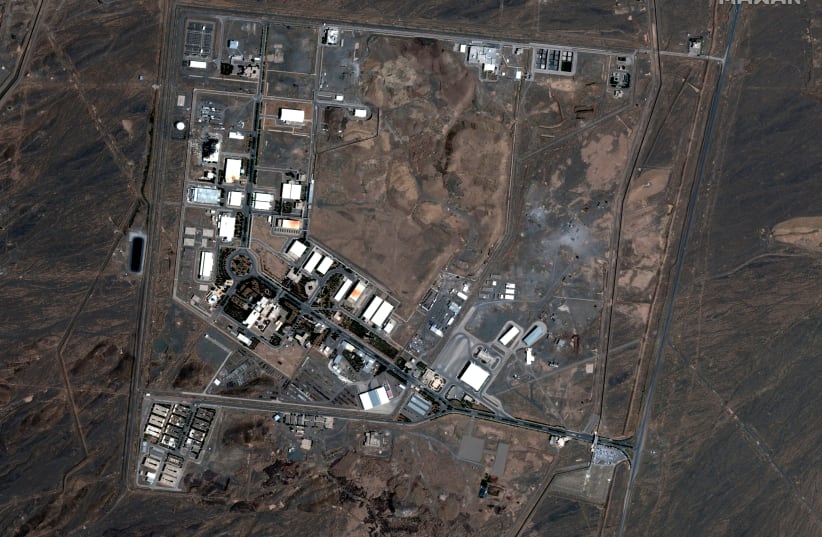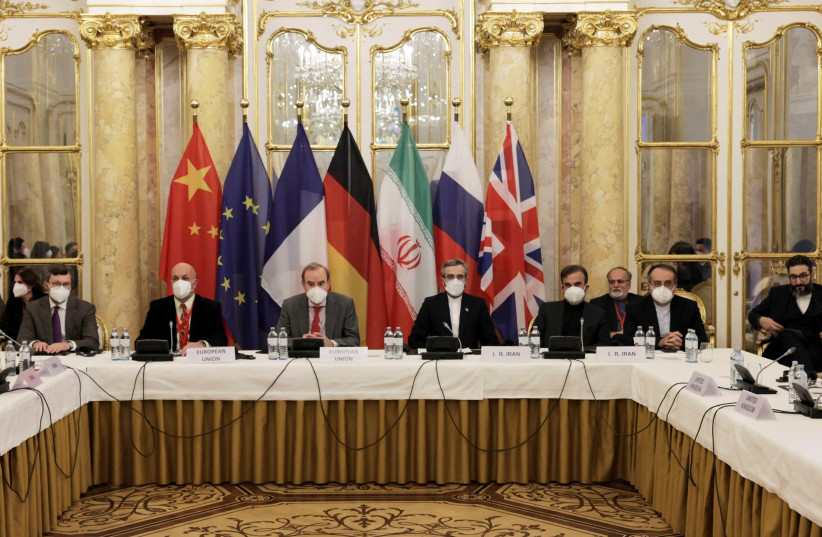The Iranian regime continues to expand its nuclear program in full force despite the world’s optimism that diplomacy is still the best option to keep Iran from obtaining nuclear weapons.
Currently, the regime is enriching uranium to a purity of greater than 63% in Natanz, Iran, which is close to weapons-grade 90% enrichment. It is stockpiling more enriched uranium, using more efficient advanced centrifuges and conducting experiments with uranium metal, a material needed for weaponization.
These expansions indicate that there is little reason for the world to count on diplomatic success. Some analysts argue that military action is the only option to deter Iran from advancing its nuclear program; others state that a preemptive strike would not put an end to Iran’s nuclear ambitions and would encourage the regime to accelerate its buildup of atomic power free from international restrictions. This latter argument indicates how hard it has become for outside observers to understand the multiple crises that the regime is facing when they evaluate the Iranian regime’s response to destroyed nuclear infrastructure.
Preemptive strikes against Iran’s nuclear sites present a vastly complex military challenge. It would be wrong to assume that the regime would rebuild or accelerate a further buildup of its nuclear power if effectively destroyed. The regime faces multiple challenges that make it challenging to direct sufficient funds to rebuild a destroyed nuclear weapon program.
First, nuclear proliferation cannot occur without hefty resources. Nuclear weapons programs are extremely costly, not least because of the ever-increasing quest for bigger arsenals and delivery systems. The cost of a single B61-type warhead is approximately $20 million, and the cost of a single land based delivery system is even higher, something between $50 million to $85 million. Other costs include development, testing, evaluation, construction, personnel, project life cycle costs, and operating and maintaining the missiles.
Many countries do not pursue nuclear weapons due to a lack of necessary financial resources. In the early 1980s, the number of civilian and military atomic programs declined because operating costs had skyrocketed. Economic viability was a significant factor in persuading Kazakhstan and Ukraine to disarm and give up their nuclear weapons.
Those who argue that the Iranian regime would rebuild after a kinetic attack on their nuclear facilities tend to overlook the cost factor. Tehran has spent approximately $500 billion on their nuclear program to bring it up to its current level, excluding non-quantifiable aspects of the nuclear program, such as the affects of US sanctions. Iran’s economy is close to collapse after years of crippling sanctions. If the nuclear program is destroyed, Iran would lack the massive resources required to rebuild its infrastructure.
Since 2018, US sanctions have inflicted heavy damage on Iran’s economy. The economy has shrunk, experiencing an 8.7% negative growth in 2019 and an 11% negative growth in 2020-21. The country’s debt has reached $254 billion, their currency has lost 80% of its value in less than two years and their GDP has declined from a peak of $628 billion in 2018/19 to $191.7 billion in 2020/21. Adding to their GDP woes, the inflation rate stands at 49.5% and unemployment has inched close to 10% – and it’s expected to climb higher in the future. According to the Statistical Centre of Iran, the critical youth unemployment rate shows distressingly high levels and the pandemic has deepened the economic crisis.
Iran’s economy is one of the worst hit by the pandemic in the region. In April 2021, the regime called on the International Monetary Fund (IMF) for emergency assistance in the form of a $5 billion loan to fight against the impact of the pandemic on its economy. The government has started borrowing billions of dollars in local currency from the central bank to manage its budget deficit and finance operations. The money supply has been continuously growing at an alarming rate, which according to experts may lead to hyperinflation beyond control, similar to the hyperinflation seen in Venezuela.
Second, the nuclear program has lost its domestic credibility in recent years. Unlike in the past, the right to develop nuclear power is not considered a point of national pride by Iranians but a source of national misery. In the past, the regime gained popular support by linking the nuclear enterprise to Iran’s sovereign right, and to their economic and scientific progress; however, the nuclear program has currently lost its credibility among Iranians because of the crippling sanctions that came as a result.
Most Iranians no longer support the nuclear program because the program’s cost outweighs its benefits. This should not come as a surprise because political psychology indicates that people periodically change their beliefs in the context of reality in matters involving their well-being. As economic hardship takes its toll, individuals are evaluating the cost of holding on to certain beliefs.
The third reason why Iran might face significant challenges in rebuilding a destroyed nuclear weapons program is the presence of nationwide anti-regime protests. Since 2017, numerous anti-regime demonstrations have broken out in the country, spurred by concern over the stunted economy and the high prices of essential goods and of fuel. The December 2017 demonstrations that lasted until January 2018, turned into an open rebellion against the regime’s leadership, with protesters referring to Ayatollah Ali Khamenei shouting death to the dictator. Protesters demanded to know why the regime is redirecting a massive amount of resources away from domestic spheres where they are urgently needed towards consolidating its influence in the Middle East. The regime was only able to suppress the protests after security forces killed at least 20 people and arrested hundreds.
In November 2019, the regime experienced its deadliest political unrest since 1979. Protests erupted across Iran after gasoline prices increased by 50%, with outraged demonstrators calling for an end to the regime. Security forces killed at least 1,500, injured 2,000 and detained 7,000 protesters. Since 2021, unrest in Iran has followed a general upward trend, which reveals the nation’s frustration with the regime’s policies, as well as the severe political and economic challenges that the regime is facing.
As well, Iran is facing a growing water crisis. It ranks fourth among the most water distressed countries in the world, with over 94% of the country affected by various levels of long term drought and more than 70% of the population facing severe water shortages. Currently, there is an ongoing water crisis in 27 of the 31 provinces in Iran, with the majority of these provinces having already passed the critical point of their water supply and relying on government water deliveries by tanker trucks. Addressing the water crisis requires enormous investment and if it is not adequately addressed it will have significant social and political implications that could lead to the demise of the regime.
Finally, the regime may not restart the program if it is convinced it will be destroyed again. Saddam Hussein and Bashar Assad gave up their long term nuclear weapons ambitions after Israeli preemptive strikes destroyed their programs. The two dictators were convinced that as long as Israel considered the proliferation of nuclear weapons in the region as an existential threat, there was no chance they could get the bomb - although Saddam chose to maintain the appearance of nuclear deterrence.
In summation, Iran’s economy faces too many pressures to allow it to rebuild a costly and seemingly purposeless nuclear program. Severe economic woes, the cost of a weapons program, growing social unrest and the evaporation of nuclear legitimacy are significant roadblocks for the regime if it wishes to direct sufficient funds to rebuild a destroyed nuclear weapons program within a reasonable period of time.
The writer is a senior research fellow at the Philos Project.

